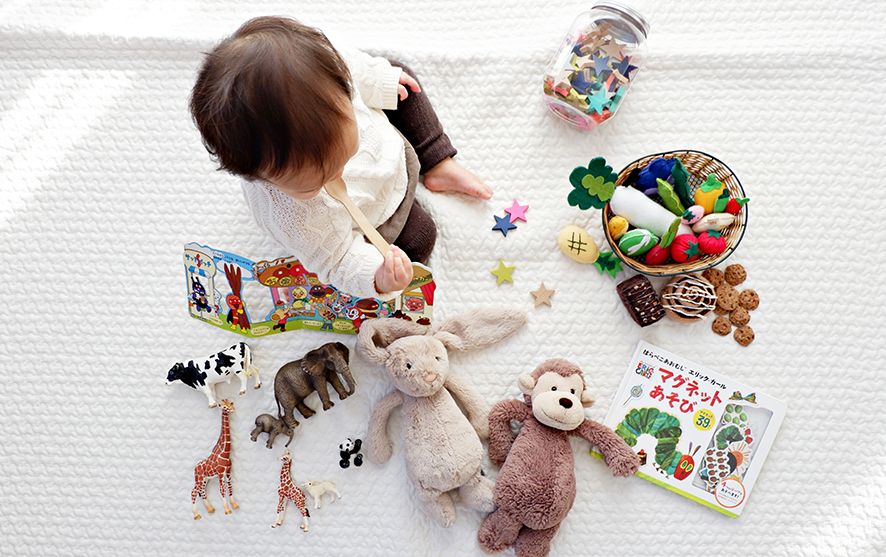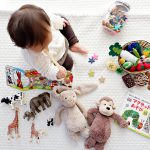Cranberry flapjack bars
Packed full of energy-inducing fruits and seeds, our cranberry flapjack bars are great for on-the-go […]
Read more

This activity is a great way to develop language and encourage your child to name objects and begin using a wider range of vocabulary.
Place the objects onto the tray in front of your child, naming them, or asking your child to name them as you do. You can use everyday household objects e.g. spoon, cup, hat or small toys your child enjoys such as farm animals. Ask your child to help you name them. If they are confident in naming them, you may like to add some further objects and go for new words they are less familiar with.
Cover the tray with the blanket/piece of fabric and quickly remove one from underneath, placing it behind your back. Take off the fabric and see if your child notices that an item is missing – even young babies can subitise up to around three objects, so will likely be able to see something is missing.
Ask your child’ ‘what’s gone?’ and see if they can name the object. Even if your child is not confidently talking yet, you can ask them, ‘Is the cow there?…Is the sheep there?’ and encourage them to say yes/no or nod/shake their head to communicate this. Continue until you reach the point of them identifying the object that is not there, then reveal it from behind your back.
A useful strategy to use when a child is not yet confidently talking is to start off the sentence e.g. ‘It’s a….’ and leave the pause to encourage your child to have a go. Praise and acknowledge any attempts to speak, even if it is a babble or noise.
For children who can confidently name the objects, extend this further by using two or three words to talk about them, as well as introducing a wider variety for added vocabulary. E.g. ‘the fluffy sheep’ or ‘the silver keys’ can be used to name and describe each object.